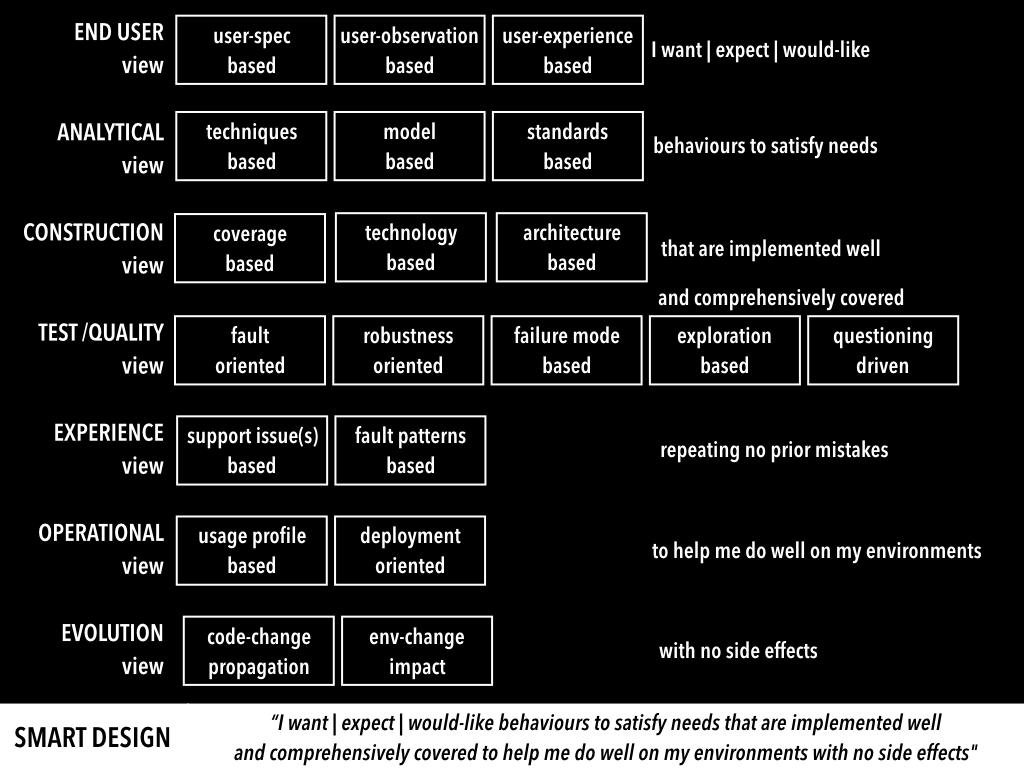Let us talk a bit of test design now. We focus a lot of execution, and therefore the ability to cover more. The focus has veered to how frequently we are able to execute the tests and therefore on automation. Let’s step back and ask to what the objective was, it was to primarily deliver clean code. So a deeper sensitivity to the quality of tests. This is where design becomes important.
So what is a smart way to design to come with good scenarios, ideally few that can uncover issues that matter most. Smart Design is about looking at the system from multiple views to ensure:
“I want | expect | would-like behaviours to satisfy needs that are implemented well“
and comprehensively covered to help me do well on my environments with no side effects”.
Then decide what you want to prevent, statically detect or test, be it via human or a machine. Focus on intent and then the activity.
This is featured with other ideas in this article “20 approaches to Smart Test Design“, you way want to check it out.



Add a Comment